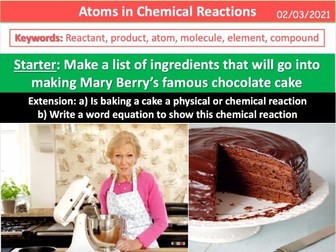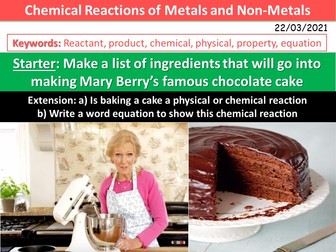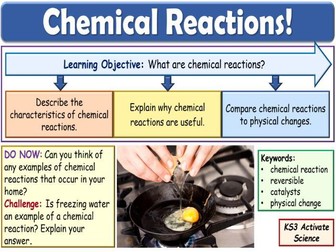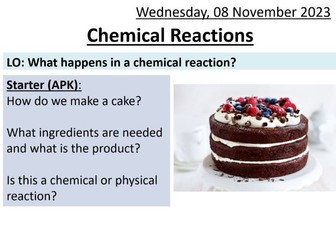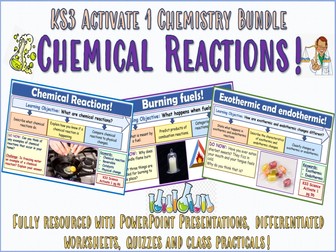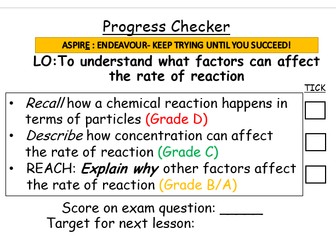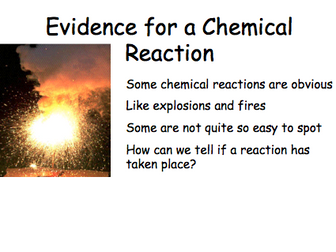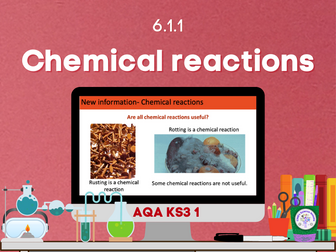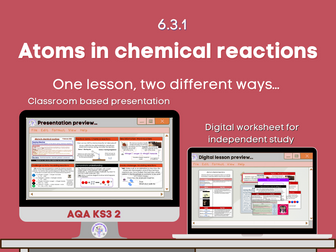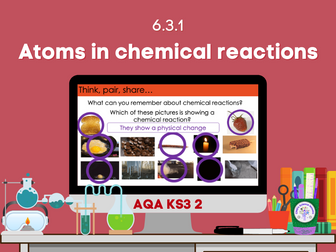Chemical Reactions and Physical Changes
<p>A comprehensive, engaging and interactive lesson package designed with non-science/non-chemistry specialist teachers in mind!</p>
<p><strong>This lesson contains:</strong></p>
<ul>
<li>Lesson powerpoint - including teacher delivery notes in “notes” section</li>
<li>Student led lesson worksheet</li>
<li>Teacher answer sheet</li>
<li>Practical Risk Assessment</li>
</ul>
<p><strong>Lesson resources contain:</strong></p>
<ul>
<li>In-built challenge tasks throughout</li>
<li>In-built scaffolded learning for lower abilities</li>
</ul>
<p><strong>Objectives:</strong><br />
Students will be able to…</p>
<ul>
<li>Describe what physical changes and chemical reactions are</li>
<li>Know the different signs of a chemical reaction taking place</li>
<li>Class different examples as either physical changes or chemical reactions</li>
<li>Describe the difference between a physical change and chemical reaction</li>
</ul>
<p>This lesson contains a student led lesson sheet, with the focus being on students learning through doing, practicing skills and identifying patterns and reasons themselves. Resources and slides ask students the key questions and develops ideas and concepts from the ground up and address common issues, mistakes and misconceptions.</p>
